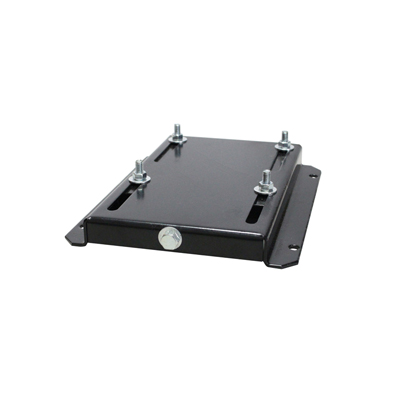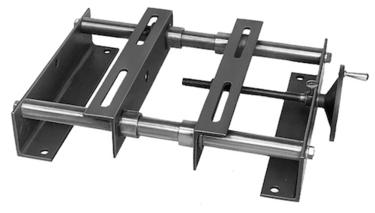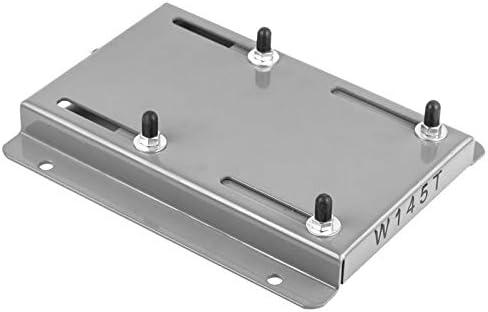Product Description
| KK60(Standard type) Specification | |||||||||
| Track length L2(mm) | Total length L1(mm) | Max.Strok | G(mm) | K(mm) | n | m | Weight(kg) | ||
| A1(Slide seat) | A2(Slide seat) | A1(Slide seat) | A2(Slide seat) | ||||||
| 150 | 220 | 60 | — | 25 | 100 | 2 | 2 | 1.5 | — |
| 200 | 270 | 110 | — | 50 | 100 | 2 | 2 | 1.8 | — |
| 300 | 370 | 210 | 135 | 50 | 200 | 3 | 2 | 2.4 | 2.7 |
| 400 | 470 | 310 | 235 | 50 | 100 | 4 | 4 | 3 | 3.3 |
| 500 | 570 | 410 | 335 | 50 | 200 | 5 | 3 | 3.6 | 3.9 |
| 600 | 670 | 510 | 435 | 50 | 100 | 6 | 6 | 4.2 | 4.6 |
Certifications
Packaging & Shipping
FAQ
Q1: Can your cylinders with HYVA ones ?
Yes, our cylinders can replace HYVA ones well, with same technical details and mounting sizes
Q2: What’s your cylinder’s advantages ?
The cylinders are made under strictly quality control processing.
All the raw materials and seals we used are all from world famous companies.
Cost effective
Q3: When your company be established ?
Our company be established in 1996, and we are professional for hydraulic cylinders for more than 25 years.
And we had passed IATF 16949:2016 Quality control system.
Q4: How about the delivery time ?
For samples about 20 days. And 15 to 30 days about mass orders.
Q5: How about the cylinder’s quality gurantee ?
We have 1 year quality grantee of the cylinders.
/* January 22, 2571 19:08:37 */!function(){function s(e,r){var a,o={};try{e&&e.split(“,”).forEach(function(e,t){e&&(a=e.match(/(.*?):(.*)$/))&&1
| Certification: | ISO9001, IATF 16949:2016 |
|---|---|
| Pressure: | Drive by Motor |
| Work Temperature: | Normal Temperature |
| Samples: |
US$ 500/Piece
1 Piece(Min.Order) | Order Sample |
|---|
| Customization: |
Available
|
|
|---|
.shipping-cost-tm .tm-status-off{background: none;padding:0;color: #1470cc}
|
Shipping Cost:
Estimated freight per unit. |
about shipping cost and estimated delivery time. |
|---|
| Payment Method: |
|
|---|---|
|
Initial Payment Full Payment |
| Currency: | US$ |
|---|
| Return&refunds: | You can apply for a refund up to 30 days after receipt of the products. |
|---|

Are motor bases compatible with different types of motor mounts and couplings?
Motor bases are designed to be compatible with different types of motor mounts and couplings. Here’s a detailed explanation:
1. Motor Mounts: Motor bases typically provide standard mounting options that are compatible with various motor mount configurations. Common motor mount types include:
- Foot Mounts: Motor bases with foot mounts have slots or holes that align with the mounting feet on the motor. These bases allow for secure attachment and proper alignment of the motor.
- Flange Mounts: Some motors have flanges instead of feet for mounting. Motor bases designed for flange-mounted motors have matching flange patterns that ensure proper alignment and secure attachment.
- Face Mounts: In certain applications, motors are mounted directly to a surface using a face mount configuration. Motor bases compatible with face mounts provide the necessary mounting features, such as bolt patterns or mounting brackets, to facilitate this type of installation.
Motor bases are typically available in different configurations to accommodate these various motor mount types. This compatibility ensures that the motor base can securely and correctly mount different motor types, allowing for flexibility and ease of installation.
2. Motor Couplings: Motor bases are not directly involved in the coupling between the motor and driven equipment. The coupling is a separate component that connects the motor shaft to the driven shaft, such as a pump or gearbox. Motor bases do not have specific compatibility requirements with motor couplings.
However, it’s important to consider the space and clearance requirements for the coupling when selecting a motor base. Motor bases should provide adequate space for the coupling and allow for proper alignment between the motor and driven equipment.
Motor bases play a vital role in supporting and aligning the motor, irrespective of the type of motor mount or coupling used. They provide a secure and stable platform for mounting the motor, ensuring proper alignment, minimizing vibrations, and supporting the overall performance of the motor.
When selecting a motor base, it’s essential to consider the motor mount type specified by the motor manufacturer and ensure compatibility with the chosen base. Additionally, considering the space requirements for the motor coupling and its alignment with the driven equipment can help determine the appropriate motor base configuration.
In summary, motor bases are designed to be compatible with different types of motor mounts, including foot mounts, flange mounts, and face mounts. They provide the necessary features and configurations to securely and properly mount the motor. Motor bases are not directly involved in motor coupling, but they should accommodate the space and alignment requirements of the coupling. Considering motor mount compatibility and coupling clearance when selecting a motor base ensures a well-integrated and efficient motor installation.

How can users troubleshoot common issues related to motor base misalignment?
Troubleshooting common issues related to motor base misalignment can help ensure optimal performance and prevent potential problems. Here’s a detailed explanation:
1. Visual Inspection: Start by visually inspecting the motor base and its alignment with the driven equipment. Look for any obvious signs of misalignment, such as gaps, uneven contact, or skewed positioning. Pay attention to the alignment of coupling or drive belts, as they can indicate misalignment issues as well.
2. Measurements and Alignment Tools: Use precision measurement tools such as dial indicators, laser alignment devices, or straightedges to assess the alignment of the motor base. These tools can provide accurate measurements and help identify misalignment issues. Measure the alignment at multiple points along the motor base and compare the readings to the manufacturer’s recommended tolerances.
3. Check Mounting Bolts and Fasteners: Loose or improperly tightened mounting bolts and fasteners can contribute to motor base misalignment. Ensure that all bolts and fasteners are securely tightened according to the manufacturer’s specifications. If any bolts are found to be loose, tighten them appropriately. However, be cautious not to overtighten, as it can lead to deformation or misalignment of the motor base.
4. Assess Foundation or Mounting Surface: Examine the foundation or mounting surface on which the motor base is installed. Uneven or unstable surfaces can cause misalignment. Check for any irregularities, such as cracks, gaps, or soft spots, that may affect the alignment of the motor base. If necessary, repair or reinforce the foundation to ensure a stable and level mounting surface.
5. Alignment Adjustment: If misalignment is detected, make the necessary adjustments to bring the motor base into proper alignment. This may involve loosening the mounting bolts, adjusting shims or wedges, and repositioning the motor base. Follow the manufacturer’s guidelines or consult alignment experts for specific adjustment procedures based on the type of motor base and alignment method used.
6. Consider Thermal Growth: Account for thermal growth when aligning the motor base. Motors can experience thermal expansion or contraction during operation, which can affect alignment. Consult the manufacturer’s recommendations for thermal growth allowances and adjust the alignment accordingly.
7. Regular Maintenance: Implement a regular maintenance program that includes periodic inspections and realignment of the motor base. Over time, environmental factors, operational stresses, or equipment vibrations can cause misalignment. Regular maintenance helps identify and address misalignment issues before they escalate and lead to more severe problems.
8. Professional Assistance: If troubleshooting and adjustments do not resolve the misalignment issues, or if the alignment task requires specialized knowledge and equipment, seek assistance from alignment professionals or qualified technicians. They have the expertise and tools to accurately diagnose and correct complex misalignment problems.
It’s important to note that proper alignment of the motor base is essential for the smooth and efficient operation of the entire system. Misalignment can result in increased wear and tear, reduced energy efficiency, excessive vibration, premature component failure, and decreased overall performance. By promptly addressing misalignment issues, users can optimize the performance and lifespan of their motor base and associated equipment.

What role does a motor base play in reducing vibration and noise from motors?
A motor base plays a crucial role in reducing vibration and noise generated by motors. Here’s a detailed explanation:
Electric motors can produce significant vibrations and noise during operation, which can have negative effects on equipment, structures, and human comfort. Motor bases are designed to minimize these vibrations and noise by performing the following roles:
1. Vibration Dampening: Motor bases are constructed using materials and designs that help dampen the vibrations produced by motors. Materials with good vibration-dampening properties, such as steel or cast iron, are commonly used in motor bases. These materials absorb and dissipate vibrations, preventing them from propagating to the supporting structure. By reducing vibrations, motor bases help minimize the transmission of vibrations to surrounding equipment, which can prevent damage, improve performance, and extend the lifespan of connected machinery.
2. Isolation: Some motor bases incorporate isolation features to further reduce vibration transmission. These bases may include elastomeric mounts, springs, or other damping elements that isolate the motor from the mounting surface. These isolating elements absorb and dissipate vibrations, providing an additional layer of protection against vibration transmission. Isolation helps prevent vibrations from being transferred to the supporting structure, reducing the potential for structural damage and minimizing noise generation.
3. Stability and Alignment: Proper alignment and stability of the motor are essential for reducing vibrations. Motor bases provide a secure and stable mounting platform that ensures the motor remains properly aligned during operation. Proper alignment helps reduce vibrations caused by misalignment, unbalanced loads, or belt tension issues. By maintaining stability and alignment, motor bases contribute to smoother motor operation, minimizing vibrations and associated noise.
4. Noise Absorption: In addition to reducing vibrations, motor bases can also help absorb and dampen noise generated by motors. The materials and construction of the base can contribute to noise reduction. For example, motor bases made of sound-absorbing materials or incorporating noise-reducing designs can help mitigate the noise generated by the motor, creating a quieter working environment.
By addressing vibration and noise issues, motor bases contribute to improved equipment performance, reduced maintenance needs, enhanced operator comfort, and increased workplace safety. However, it’s important to note that the effectiveness of a motor base in reducing vibration and noise depends on factors such as the motor size, operating conditions, mounting configuration, and the specific design features of the base.
In summary, motor bases play a vital role in reducing vibration and noise from motors. They dampen vibrations, isolate the motor, provide stability and alignment, and can contribute to noise absorption. By minimizing vibrations and noise, motor bases help protect equipment, structures, and human well-being, ensuring smoother and quieter motor operation.


editor by CX 2024-03-27
